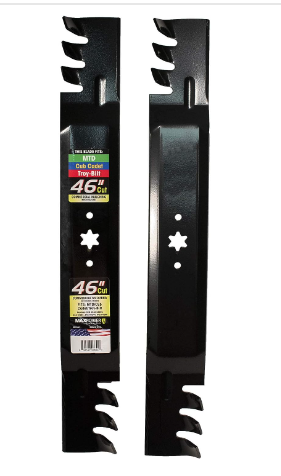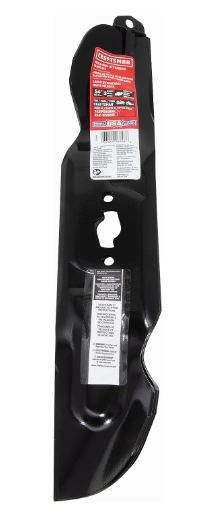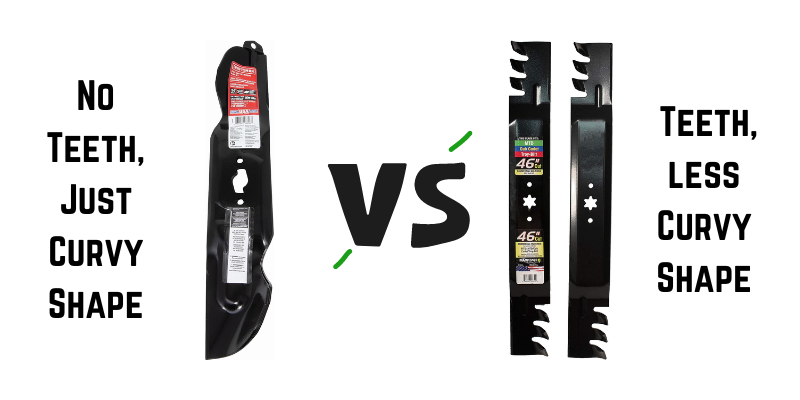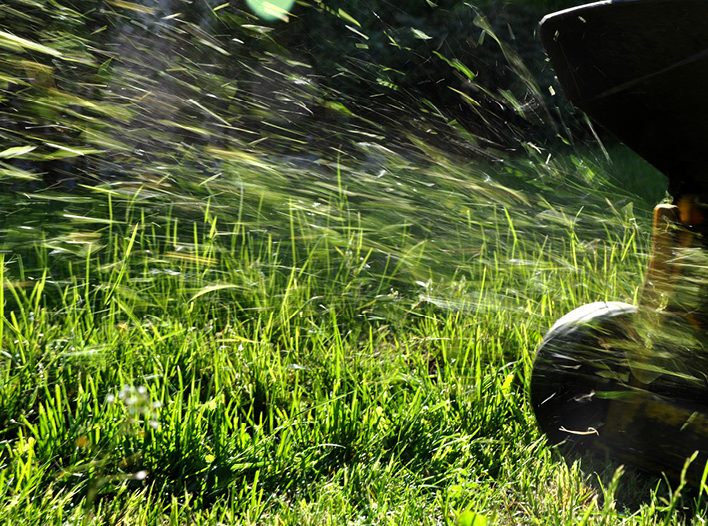Ready for the Mulching blades vs bagging blades showdown? Mulching blades and bagging blades are the most popular blade types used for mowers. Often, lawn care enthusiasts are debating which blade offers superior efficiency.
Some folks swear by mulching blades while others argue in favor of bagging blades. Setting all the differences aside, each set of blades has some benefits and drawbacks.
There are no perfect mower blades, you just have to choose the one that meets your requirements.
The main difference between mulching and bagging blades is the shape. It is easy to tell them apart due to their unique designs. Besides appearance, they differ in their functionality as well. Plus, they differ from each other in terms of energy consumption and mower vibrations.
If you’re struggling to choose between mulch and bagging blades, learning about the differences will help you make a more informed decision.
Mulching Blades vs Bagging Blades
| Features | Mulching Blades | Bagging Blades |
|---|---|---|
| Visual Look |  |  |
| Shape | Mulching blades have a curved cutting edge for repeated cuttings of grass clippings | Bagging blades have bends along the surface of the cutting edge |
| Functionality | It is a 3-in-1 mower blades that produces mulch as well as bag and discharge clippings | Bagging blades is designed to handle two tasks efficiently, bagging and discharging |
| Lifting Capability | Mulch blades have a medium to low lifting capacity | Bagging blades ensure unobstructed airflow and consequently, greater lift |
| Grass Handling | Perfect for Small and Medium-sized lawns | Works well for large lawns with tall, overgrown grasses |
| Mower Vibration | Requires less mower vibration and power consumption | A bit more power-intensive than mulching blades |
Mulching Blades
Mulching blades , 3-in-1 blades, are versatile mower blades with cutting, bagging, and discharging capabilities. Mulch blades cut grass into thinner cuts to produce a natural fertilizer and for easy decomposition.
It has a more curved design, which offers superior efficiency when it comes to cutting grass. A drawback to this design is that it leads to reduced lift and airflow. On the whole, it guarantees a precisely-cut lawn and adds essential nutrients back to the soil.
Bagging Blades
Bagging blades are not as popular as mulching blades. As the name implies, it collects grass clippings and throws them into the bag of the mower or very far away from the mower if the bag is not attached.
Most designs available nowadays also have the function to discharge the cuttings. The most common types of bagging blades are regular or 2-in-1 blades.
These aerodynamically designed blades generate a powerful lift and discharge them with greater force. However, it may leave the lawn looking untidy as they are not efficient at cutting grass.
Difference Between Mulching and Bagging Blades
Here are some basic differences that set mulching and bagging blades apart
Shape
Landscapers can easily tell them apart from their appearance. Mulch blades have a more curved profile than bagging blades.
Their edges either have curved flaps or serrated teeth which allows them to create powerful vacuum effects and strong airflow.
On the other hand, bagging blades are designed with bends along the blade. Their signature bend will help landscapers identify them from other blades.

Functionality
Mulching blades are designed to be all-purpose, offering cutting, bagging, and discharging capabilities.
It cuts grass repeatedly to convert clippings into tiny pieces. Cuttings are then deposited onto the lawn to be used as a natural fertilizer. It is not labor-intensive and does not require dealing with grass piles.
On the contrary, bagging blades, as the name implies, deal with bagging and discharging. These aerodynamically designed blades lift the grass, cut it in one go, and push it on the lawn or to the mower bag.
Lifting Capability
Mulching blades are not designed with powerful lifting capabilities. Since these blades repeatedly cut the grass at the cutting edge, their lift capacity is low. Equipped with a series of serrated teeth, it cut clippings several times instead of lifting and discharging cuttings with force.
In comparison, bagging blades have bends in their design which create maximum airflow. With greater airflow, it lifts the clippings with more force and pushes them on the topsoil.

Grass Handling
Landscapers recommend using mulching blades on small and medium-sized lawns. These blades cut grass finely and leave them on the topsoil as a form of natural fertilizer.
Comparably, bagging blades do a good job of bagging and discharging clippings. It works well with overgrown and thick grasses, however, the cuts are uneven. These blades fill the mower bag quickly after cutting the grass in one rotation.
Mower Vibrations
As stated earlier, mulching blades do not have to lift and push clippings to the mower bag. Instead, cuttings are discharged onto the topsoil.
As a result, it consumes less engine power and mower vibrations. It is a more energy-efficient way of mowing lawns and will help you save a lot of bucks on electricity bills.
In contrast, bagging blades consume more engine power and mower vibrations. These require more electricity as they lift and push cuttings to the mower bag with great force.
Bagging vs Mulching Blades: Which Blade is Right For You?
Bagging and mulching blades offer superior efficiency in various aspects, the decision to pick one should depend on your lawn area and requirements. Bagging blades are perfect for tall grasses and leave no piles and clumps on the ground. However, it drains more power from the mower engine.
On the other hand, mulch blades are more advanced and naturally fertilize the lawn. It saves time and effort by eliminating the need to throw clippings in the trash. Importantly, it does not work well with wet grasses and leaves clumps of grass on the lawn.
Frequently Asked Questions
Are bagging blades the same as mulching blades?
No, these are two different mower blades with varying functionalities. Bagging blades cut and push grass into the lawnmower bag. In comparison, mulching blades finely cut clippings and leave them on the topsoil.
Is mulching better than bagging?
Mulching and bagging blades have multiple benefits and drawbacks. Mulching blades chop clippings finely as well as save electricity. Additionally, they produce natural fertilizer and return vital nutrients back to the soil.
Conclusion
Lastly, mulching blades are a better option if you need frequent mulching. Contrarily, bagging blades are well-suited for mowing tall grass and discharging clippings to the mower bag. Both blades are efficient, so it is better to pick one depending on the requirements.